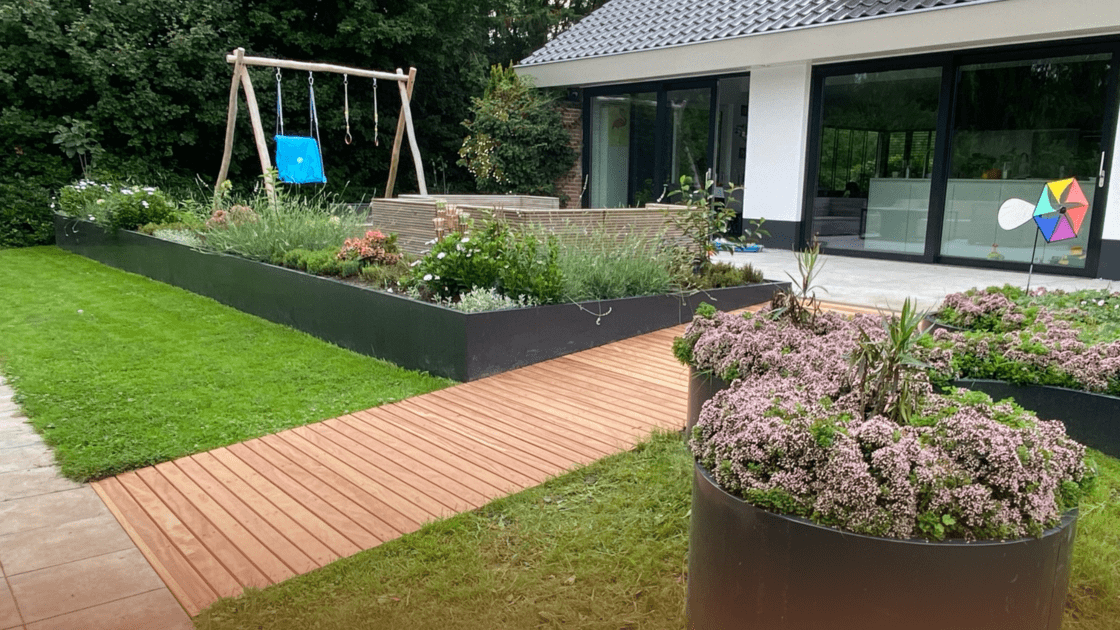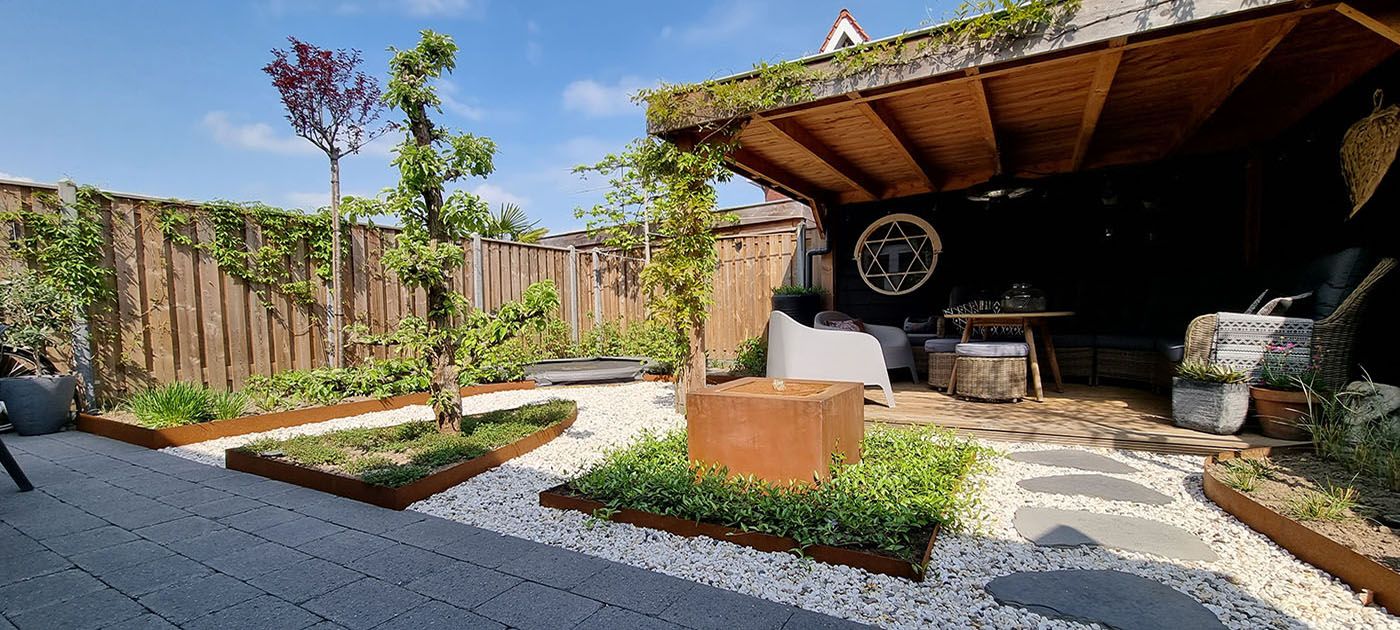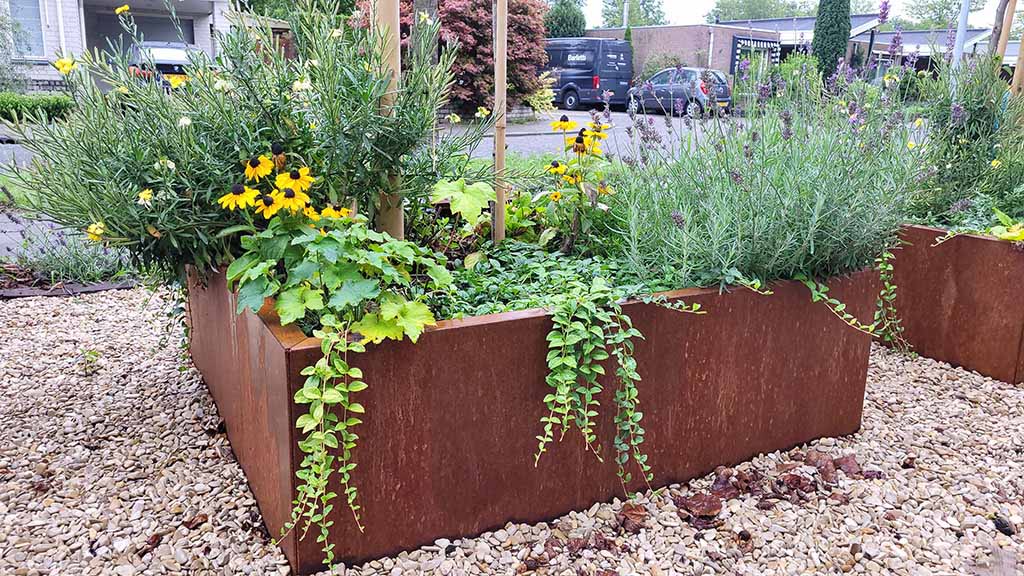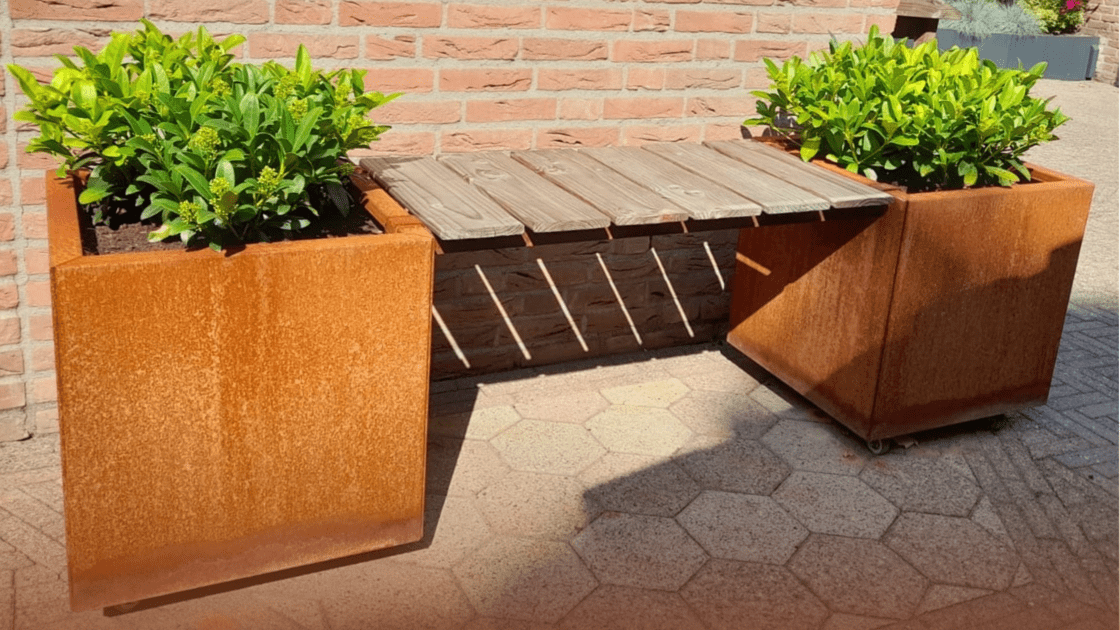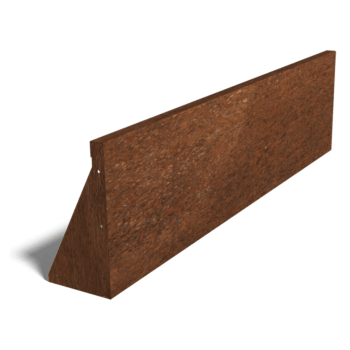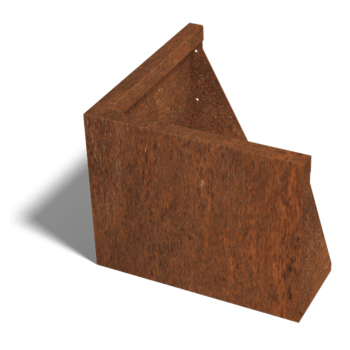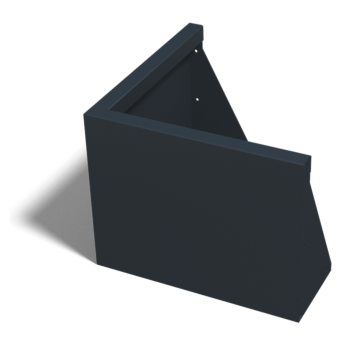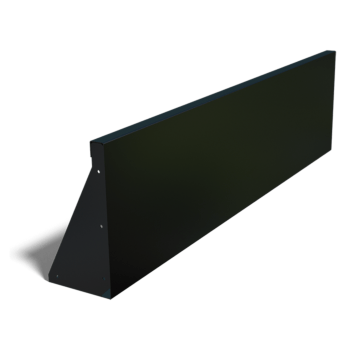Installing steel retaining walls: what do you need to pay attention to?
Retaining walls are solid constructions that are often used to compensate for height differences in the garden. They provide strong support and prevent soil and other materials from shifting. Especially with height differences where a lot of pressure is applied to the retaining walls, it is important that they are made from strong material. Steel retaining walls are therefore well-suited.
In this blog, we will explain step by step how to install a retaining wall in your garden yourself, from planning and design to practical execution and aftercare. We will also tell you everything about the costs so that you are well prepared and can make the right choices. Do you want to know everything? Read on quickly!
Click here to go directly to the step-by-step plan for installing a retaining wall.
Summary
- A retaining wall is a sturdy structure primarily used to accommodate height differences in the garden.
- You can use retaining walls both functionally and decoratively.
- A general guideline is to set the wall about 5 cm deep into the ground.
- If you are going to install a retaining wall in gardens with height differences, it is important to prepare the soil well. This helps prevent subsidence and water problems.
- For challenging projects, we recommend seeking professional advice.
What is a retaining wall exactly?
Before you begin, it's helpful to know exactly what a retaining wall is. A retaining wall, also known as a keermuur, is a wall designed to keep soil or other materials in place. These walls are especially important in projects where height differences exist. They are usually made from concrete, steel, or wood. They are specifically designed to withstand the pressure of the earth and to remain sturdy.
Retaining walls are commonly used in gardens and parks to address height differences, counteract erosion, and create terraces. Additionally, they have other applications. For example, in road construction, they ensure that soil and stones do not end up on roads and railways, especially in mountainous areas. In water management, they help protect banks and regulate water flow, preventing flooding and erosion.
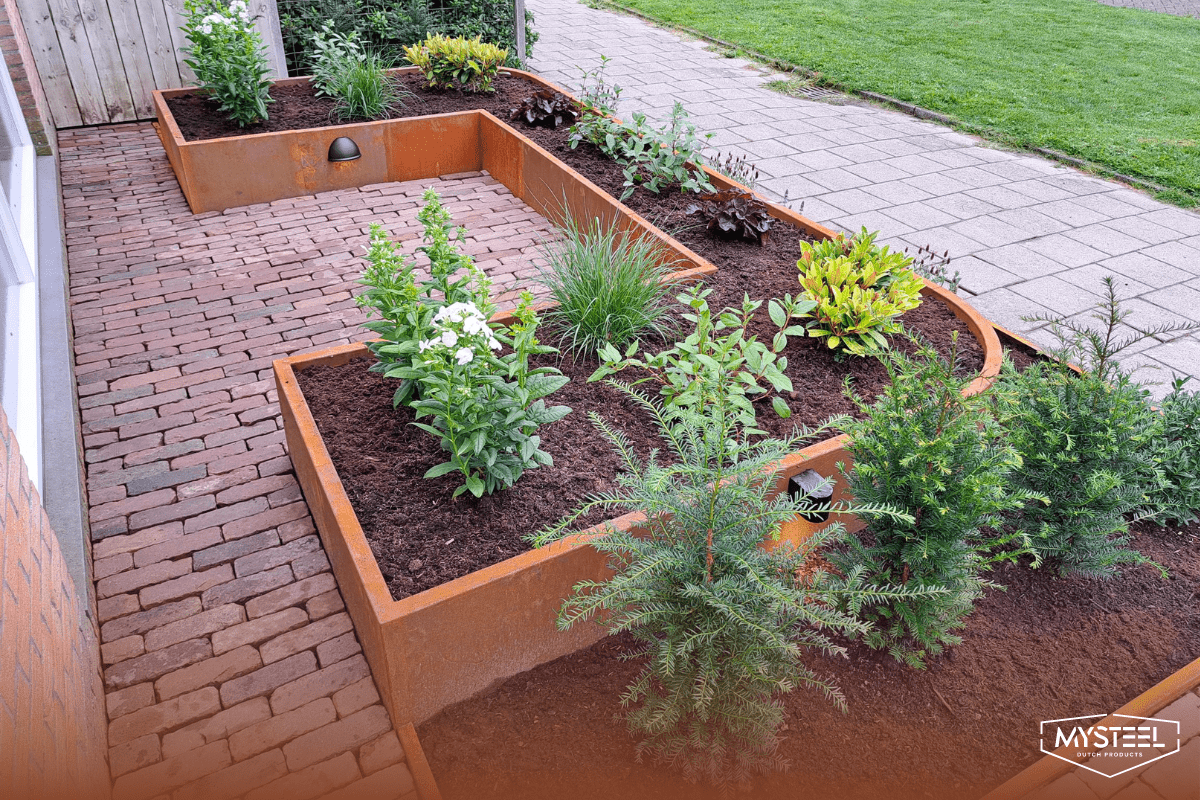

What are attractive applications for a steel retaining wall?
You can use steel retaining walls in various ways, both functionally and decoratively. Here are a few beautiful applications:
Garden fences
Steel retaining walls are perfect for creating a sense of privacy and delineating different parts of your garden.
Terrace constructions
If your garden has height differences, you can create elevated terraces. Use steel retaining walls to support these terraces and accommodate the height difference.
Water features
Do you have a serene pond or beautiful fountain in your garden? You can install steel retaining walls around them to draw extra attention. They not only give your garden a modern look but also provide stability and protect against erosion.
Planters and flower beds
With steel retaining walls, you can also create raised planters. This is a great way to add greenery, especially if you have limited space.
Functional applications
Steel retaining walls are not only beautiful but also practical. Use them for driveways or as supports for stairs and pathways. They provide the stability you need.
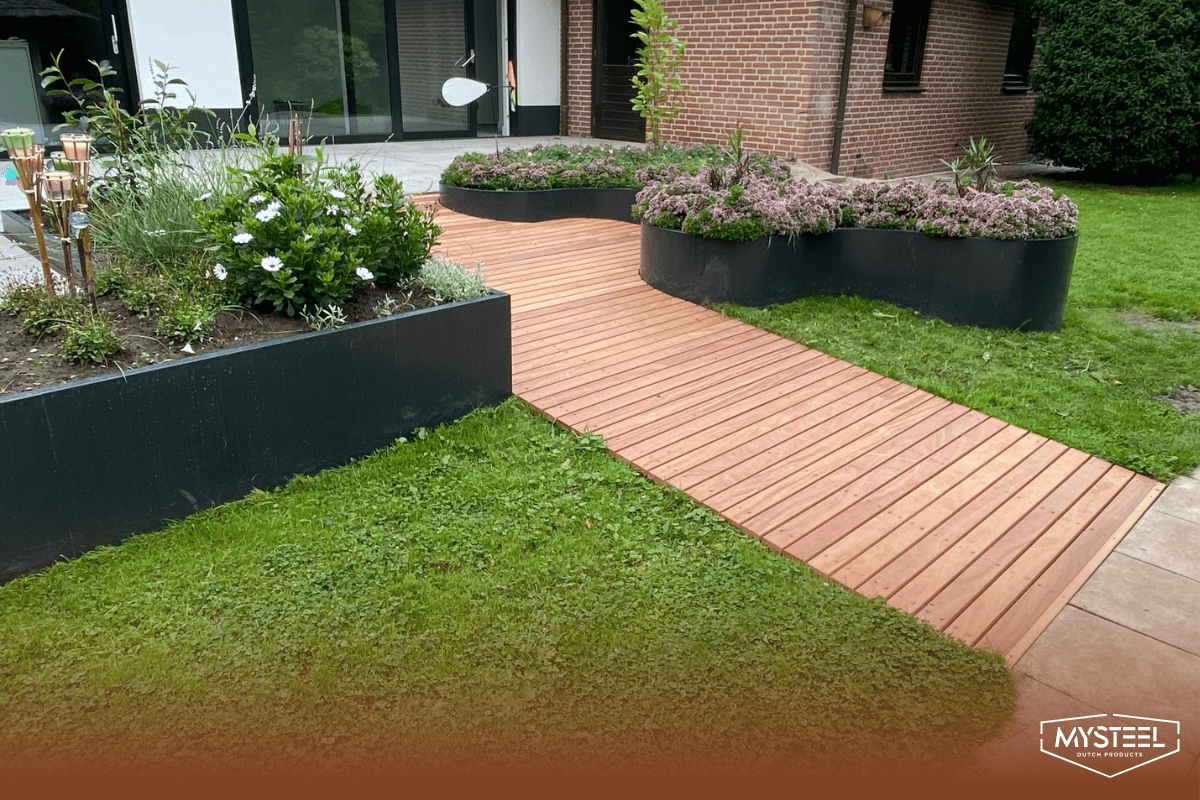

What does it cost to install a retaining wall?
Do you want to have a retaining wall installed? Then it's helpful to know what the costs are. The price depends on various factors:
- Material costs: The cost of a retaining wall depends on the materials used. The more material you need, the more expensive it will be.
- Labor costs: The price is also influenced by how much the craftsman charges per hour and how long it takes to install the retaining wall. If the work is difficult, it may take longer and therefore cost more.
- Permits and preparatory costs: Sometimes permits are required to dig and install the retaining wall. This incurs additional costs. You must also account for costs related to preparatory work, such as excavating the soil, renting excavators, and other necessary tools.
Below, we will go into more detail on each aspect.
“If excavation work is needed for your retaining wall, you may need a permit. Make sure to check this in advance.”
What is the cost of an entire retaining wall?
Below is an overview of material costs based on prices per meter for corten steel. Corten steel is the cheapest option.
Note
These prices may vary, so always check in our webshop for the current prices of our steel retaining walls.
For straight corten steel retaining walls from MySteel, prices vary depending on the height and length of the retaining wall. In addition to straight retaining walls, you will also need corners and bends to install the retaining wall. The prices of the retaining walls can be found in the webshop.
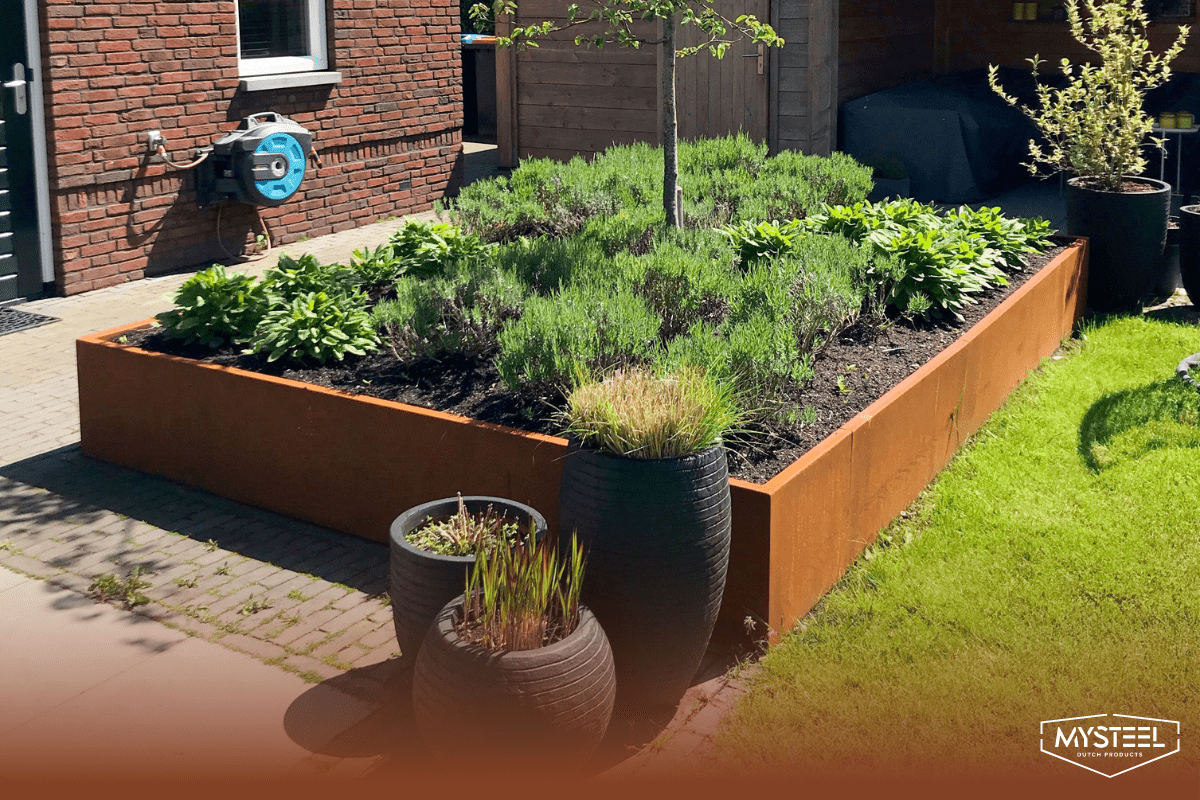

Example of a retaining wall 4 x 4 meters
To make it all understandable, let’s take a fictional example. Suppose you want to install a retaining wall in your garden with dimensions of 4 by 4 meters and a height of 40 cm.
First, you will need four corners of 50 by 50 cm. They cost €124.95 each. If you buy those four corners, it will cost a total of €499.80. These corners are important as they ensure that the retaining wall remains sturdy.
Additionally, you need long pieces for the retaining wall. You need eight pieces that are 150 cm long. Each side of the retaining wall is 4 meters long, but we need to subtract 1 meter for the corners. So, you need 3 meters of straight retaining wall for each side, which means you need two pieces per side. Each piece costs €129.95. In total, these pieces will cost €1,039.60.
If you add all the costs together, you come to €1,539.40. This is only the cost for the corners and the pieces of the retaining wall. It is exclusive of the costs for the soil or plants you may wish to add. Those costs can vary, depending on what exactly you want in your garden.
Labor costs
Labor costs can vary and depend on the difficulty of the project and the location. It usually costs about €35 per hour to hire professionals for this type of work.
Example
Let’s look again at the fictional project with an area of 4 by 4 meters. If the hourly wage for labor is €35 and 8 hours of work are performed, the total labor cost will be €280.
Permits and preparatory costs
Before you install a retaining wall, it is important to check if you need a permit. This is only necessary if excavation work will be done. You can easily check this yourself on this website.
If you need a permit, there will also be permit costs. Here are a few examples:
- Rotterdam: €326.40. For more information and applications, you can click here.
- Utrecht: €173.44. You can find all details here.
In addition to permits, preparatory work also has to be executed, such as digging. For this, you often need to rent excavators or other equipment.
Total overview
If we add up all the calculations for the fictional standard project, we see the following costs:
- The cost for materials: €1,539.40
- The cost for labor: €280
- Optional permit application Rotterdam: €326.40
- Optional preparatory work: no costs are accounted for at this time.
Total amount: €2,145.80.
“In general, it is recommended to set the wall about a third of its height into the ground.”
How deep should a steel retaining wall be excavated?
To ensure that you have a sturdy construction, it is important to know how deep you should place the retaining wall in the ground. Generally, it is recommended to set the wall about 5 cm deep. The retaining walls from MySteel have a bottom edge of 20 cm. This ensures that the weight of the soil provides enough counterpressure against displacements and subsidence.
Stability factors
However, there are some things to consider that can affect the depth of the retaining wall:
- Soil type: If the soil is sandy, you may need to dig the retaining wall deeper than in clayey soil.
- Slopes: Steeper slopes require more support. In this case, you can set the retaining wall deeper into the ground.
- Water drainage: Ensure proper drainage to prevent erosion and subsidence.
How can you prepare the soil for height differences or slopes?
If you are going to install a retaining wall in gardens with height differences or slopes, proper preparation is important to ensure that the wall is stable and that water can drain away properly. You can prepare the soil properly with these steps:
Level the ground
Start by removing stones, grass, plants, and roots from the area. Then use a shovel or an excavator to level the ground. Firmly compact the soil with a roller or a vibrating plate to create a strong base for the retaining wall.
Ensure drainage
It is important to prevent water from standing behind the retaining walls and to reduce erosion. Therefore, dig drainage ditches behind the retaining walls to properly drain the water and reduce pressure on the walls. Add a layer of gravel at the base of the retaining walls, so the water can flow away and not accumulate.
Use of foundation materials
The use of suitable foundation materials contributes to the stability and durability of the retaining walls. Lay a small layer of gravel or sand to create a strong base.
Reinforcement of slopes
For steeper slopes, additional reinforcement is needed. You can, for example, add geotextiles behind the retaining walls as extra reinforcement to prevent erosion.
“After installing a retaining wall, it is important to regularly check for subsidence and perform maintenance.”
How to install a retaining wall?
Do you want to install a retaining wall yourself? Then it is important to plan well and work precisely. With this detailed step-by-step plan, you will know exactly how to approach it:
Planning and design
The first thing you need to do is measure the space where you want to install the retaining wall. Measure the length, width, and height of this space neatly.
Then make a sketch to visualize the design of the retaining wall and the surroundings. It is also important to check if you need a permit for the work. If so, apply for it. Read more about this in the section ‘Permits and preparatory costs’.
Excavate the base
Do you know where and how you want the retaining wall? Then it’s time to mark the location. Use string and stakes to clearly demarcate the location.
Then dig a trench that is wide and deep enough to support the retaining wall. The depth of the trench should be 5 cm. This provides enough counterforce to hold soil on the other side of the trench.
Prepare the location
Before you can actually place the retaining wall, you need to remove any obstacles such as stones and roots. Use a shovel or excavator to level the ground. Then apply a layer of gravel or sand to strengthen the foundation and ensure proper drainage.
Place the retaining wall
Place the retaining walls in the trench. Ensure that they are upright and well-aligned. Use a level to check if the panels are straight. Secure the retaining walls firmly in the ground with anchors or stakes.
Leveling and finishing
Fill the trench around the retaining walls with soil, sand, or gravel. Firmly compact the material to prevent subsidence. Check once more if the panels are level and make adjustments if necessary.
Aftercare
It is important to check for subsidence after a few weeks. Fill in any areas if necessary. Ensure that there is proper drainage to prevent water buildup behind the retaining wall. Carry out regular maintenance to check the stability of the retaining wall and improve it if necessary.
Extra tips and considerations
When installing a retaining wall, there are a few other things you should consider:
Weather conditions
The best time of year to install retaining walls is usually in the spring or fall. The ground is not too hard or too wet then. Extremely high or low temperatures can make installation challenging.
Aesthetics
Using corten steel retaining walls can enhance the beauty of your garden. Use materials and colors that complement each other, so everything looks good together. Plants and decorative items around the retaining wall can also help make it appear more natural.
Conclusion
A steel retaining wall has many advantages for your garden or outdoor space. By taking into account the right materials, costs, depth, and preparatory work, you can create a durable and stable retaining wall that lasts for a long time.
For more challenging projects, especially on steep slopes or in special soil conditions, it is wise to seek help from an expert. They can assist you in planning and executing the installation, ensuring that your retaining wall is stable and safe. Although it may take some time and money, investing in good materials and advice will ensure that you can enjoy a beautiful and functional outdoor space for years to come.

